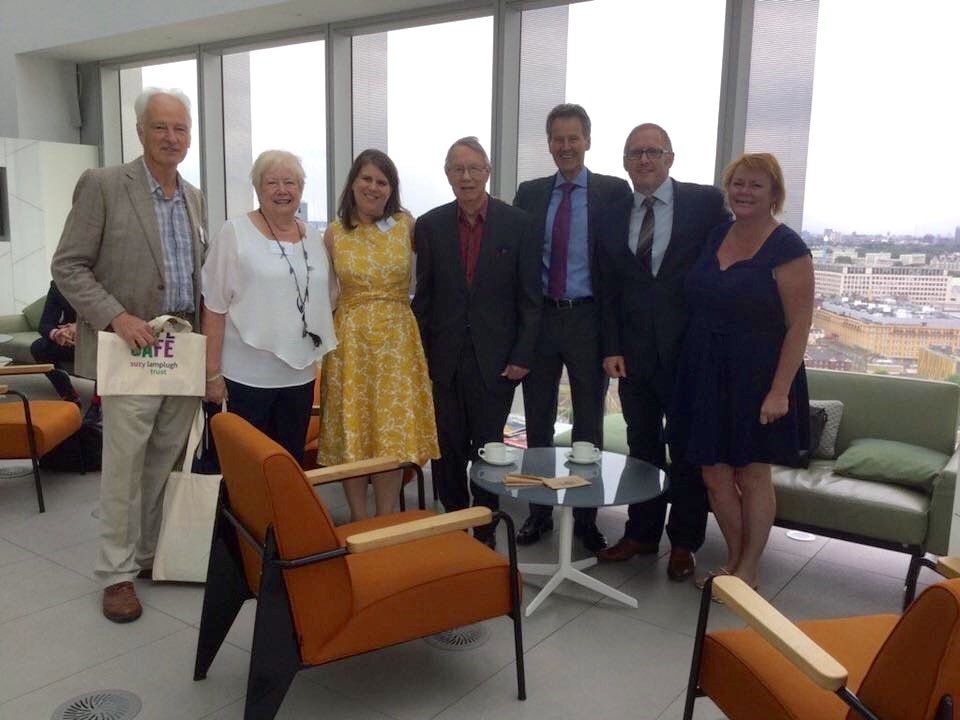By Lauren Applebey and Adam Bannister
Thirty years ago, on 28 July 1986, Suzy Lamplugh, a 25 year old estate agent, disappeared in broad daylight, in the middle of the day, whilst showing a client around a house in Fulham. Suzy’s diary suggested she had gone to an appointment at 37 Shorrolds Road at 12.45 to meet a man called “Mr Kipper”. She had been seen arguing with a man on the same road, before getting into a car. Her white Ford Fiesta was found on Stevenage Road, Fulham, later on the day of her disappearance.
Despite huge media coverage and police activity, Suzy was never found. Her mother Diana, wrote five years later, “There has not been a single trace of her. Nothing. Just as though she has been erased by a rubber.”
In 1994 Suzy Lamplugh was officially declared dead, presumed murdered. Since this time the police have reopend the case after tracings of a car that might have been used to kidnap her. Convicted murdered John Cannan was named as prime suspect for the murder, but there was no prosecution due to insufficient evidence. Cannan, 47, said to have been nicknamed “Mr Kipper” in prison, has denied any involvement.

Credit: Suzy Lamplugh Trust
The trust
Suzy Lamplugh Trust was born shortly after Suzy’s disappearance and over the past 30 years has sought to keep people safe from violence and aggression. Milestones achieved by the charity include: campaigning for private hire vehicle licensing in London, being instrumental in bringing about the Protection from Harassment Act 1997 which dealt with stalkers, producing an award winning video about safe independence for young people and setting up the National Stalking Helpline. This was the world’s first specialist service dedicated to supporting victims of stalking. The Trust has also delivered personal safety training to over 50,000 people since its inception.
A lot has been achieved, however the Trust says much more can be done. In its 30th year the charity is shining a light on violence and aggression in the workplace and personal safety of young people, two of the areas that particularly inspired Paul and Diana Lamplugh to start the Trust in Suzy’s name.
Thirty years on event
Yesterday (28 July) the charity held an event focusing on what has changed in the workplace since Suzy’s disappearance. Held at UBM’s London Headquarters the event looked at how organisations with lone and frontline workers can maintain personal safety, without compromising on business as usual. Senior business leaders gained practical tips, advice and tools to deal with lone worker safety.
Rachel Griffin, director of the Suzy Lamplugh Trust, opened proceedings with a heartfelt thanks to Mr Lamplugh for his tireless efforts in promoting the organisation through the media.
And that cause – contrary to the popular and unfair perception that health and safety can stifle fun and adventure – is partly about empowering people to live their life to the full. She recounted how the parents of Suzy Lamplugh had been alarmed by the response of some employers to their daughter’s disappearance.
Many firms were beginning to send only men out on lone-working assignments – despite the fact that they are actually more likely to be victims of violence than women, whose career opportunities were now being limited, albeit for well-intended reasons. This was one inspiration for putting personal safety at the heart of their organisation.
Rachel also elucidated the improvements in personal safety overseen by the Trust across three decades, including advocacy for stalking victims and training for young people in personal safety.

Commemorating 30 years at UBM’s offices
Taking to the stage next was co-founder of the Trust Paul Lamplugh, who recalled a conversation with his daughter, who responded to his entreaty to be careful by saying “life is for living – you have to get on with it”. It was that spirit of adventurousness that the Trust seeks to foster and support.
Personal safety training and guidance has come a long way since then and it remains as important now as it was then, said Mr Lamplugh.
He cited campaigns on workplace bullying as a big focus, especially with regard to lone workers and the threat of violence in the course of their work.
Children and young people remained at the core of the Trust’s campaigning, he added.
Mark Sarson of Octavia Housing, a housing association that operates in north and west London, said his organisation accorded health and safety top priority.
The not-for profit organisation, which recently celebrated its 150-year anniversary, empowered staff to make their own decisions to help themselves, he said.
Using someone they trust to do the training is paramount, he explained, and the variety of positive feedback – “everyone we spoke to highlighted a different thing about the training” – suggests their trust was well placed.

Ian Johannessen MD of Peoplesafe and Sir Ian Johnston former Chief Constable of British Transport Police
Founded in 1864 by philanthropist Octavia Hill (with help from benevolent industrialist John Ruskin), Octavia Housing provides social housing and care services for vulnerable members of the community. The organisation has developed and honed a risk alert system for reporting violent and other incidents that staff encounter in the course of their work visiting and caring for vulnerable residents.
“Fail to respond promptly and appropriately to these reports and people will become reluctant to report incidents” Mr Sarson said. Octavia honed the system, he continued, so that within 24-48 hours they can warn people to be cautious about visiting a particular flat.
The organisation has deployed Skyguard personal safety devices, with which staff can call the police or an ambulance much more quickly than from their smartphone.
Steffan Groch, partner and head of regulatory at law firm DWF was the event’s final speaker, and is also chair of the HSLA. He noted that road rage remains an area in need of clarification in terms of accountability. If someone encounters problems when driving in the course of their job – is that the workplace? Mr Groch suggested that it should be.
The speaker charted the evolution of health and safety guidance from ‘best practice’ to, years later, something organisations simply did as a matter of course. At this point it was not a gold plated add-on to their health and safety policy, but an essential component. “However, sometimes it takes a tragedy to move things along” he said.
The work being undertaken by the Suzy Lamplugh Trust now would follow the same journey towards best practice and ultimately, in five years or so, into a routine part of work processes.

Addressing lone working he noted that squeezed resources meant organisations were increasingly sending staff out to do jobs solo that hitherto would have been done in pairs or teams
Echoing Octavia’s Mark Sarson, he said that technology was a big part of the solution, with the number of personal safety apps proliferating and becoming more sophisticated and intuitive.
He also remarked that private prosecutions taken out by firms on behalf of staff who had been the victim of violence of physical threats in the course of their work were not common – but were growing in number.
The figures
Latest figures from 2014/15 show that 142 people were killed at work and 76,000 injuries to employees were reported. Mental health issues including stress, anxiety and depression, gave rise to the most working days lost and the most common physical or psychosocial risk cited by two thirds of workplaces was ‘dealing with difficult customers, patients and pupils.’ This was placed higher than risks such as lifting, chemical substances, slips, trips or falls and machinery.
Rachel Griffin, director of the charity, said this year the focus was on people aged in their mid-teens to early 20s and teaching them how to keep safe so they could pass on the message.
“Young people experience violence in the online world too,” she said.
“When we were young, bullying ended when you left the playground but now it follows you around as it is at the end of your phone.
The Trust continues to work to improve safety for all workers through education, support and campaigning. They are also running the Right to be Safe appeal which aims to help young people to lead safer lives. Find out more: http://www.suzylamplugh.org/
The Safety Conversation Podcast: Listen now!
The Safety Conversation with SHP (previously the Safety and Health Podcast) aims to bring you the latest news, insights and legislation updates in the form of interviews, discussions and panel debates from leading figures within the profession.
Find us on Apple Podcasts, Spotify and Google Podcasts, subscribe and join the conversation today!





